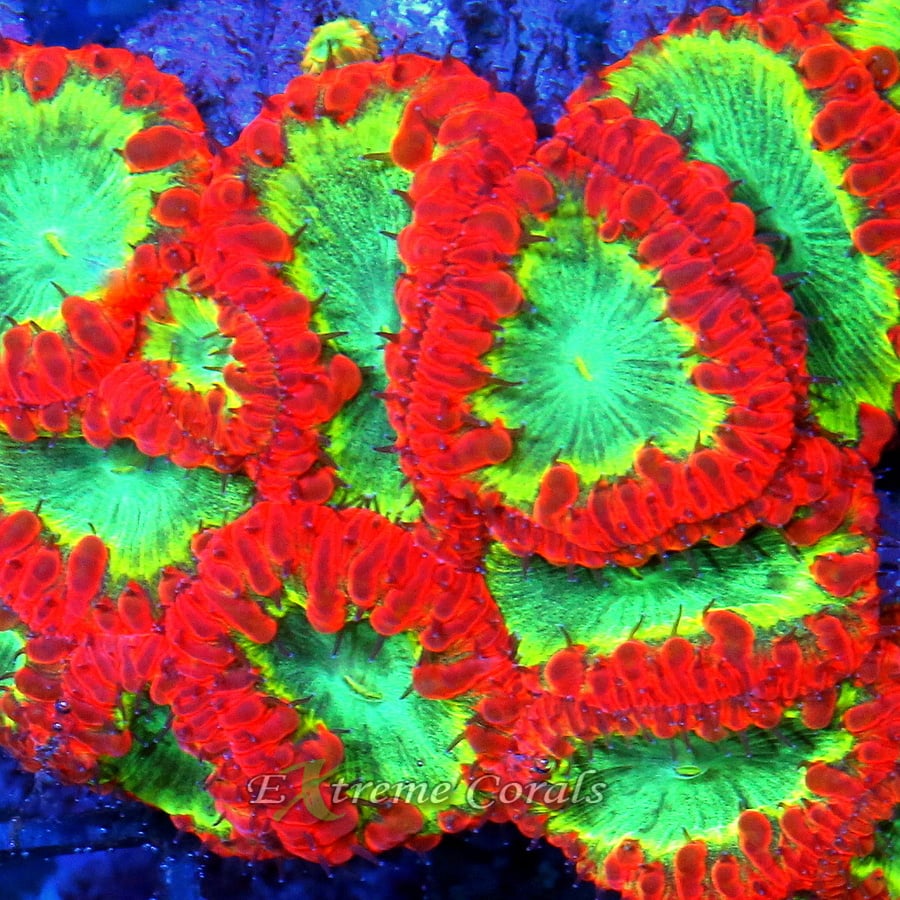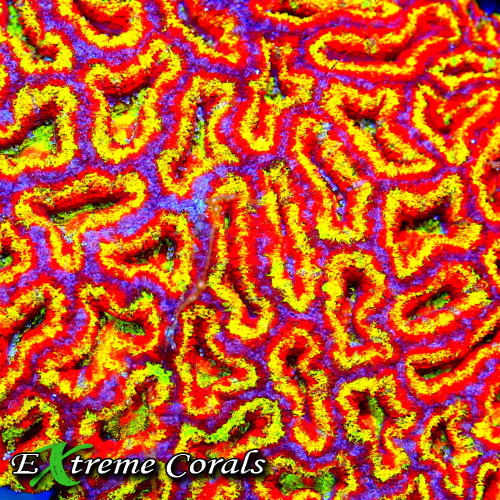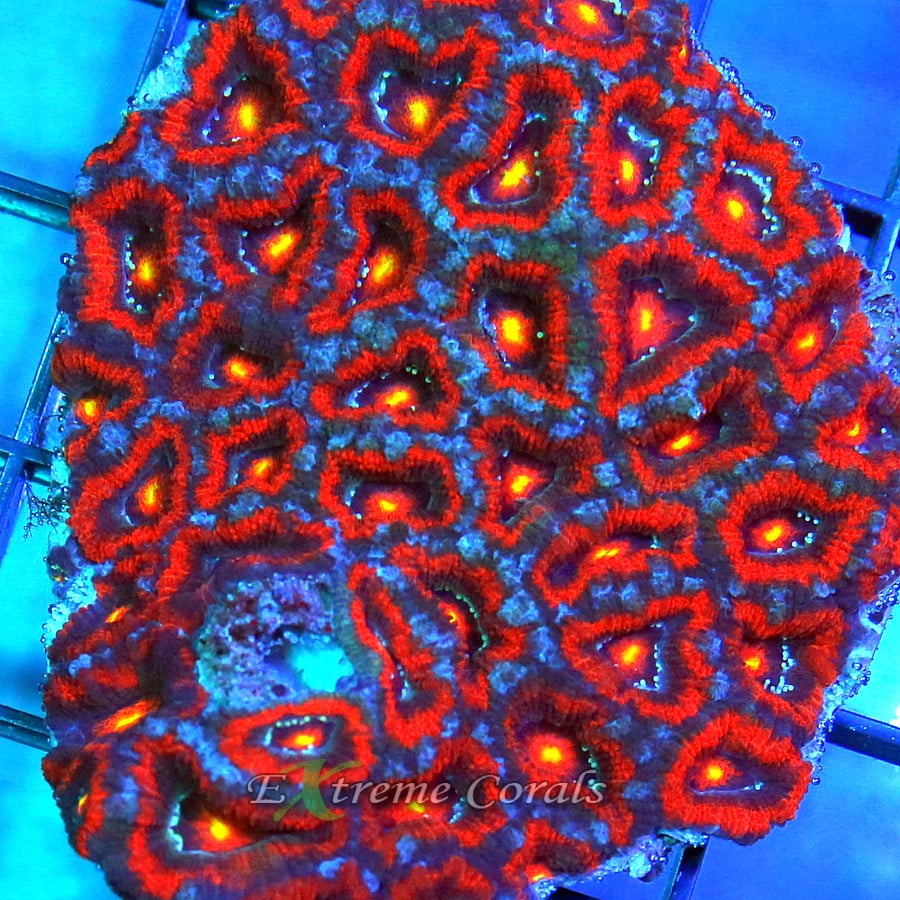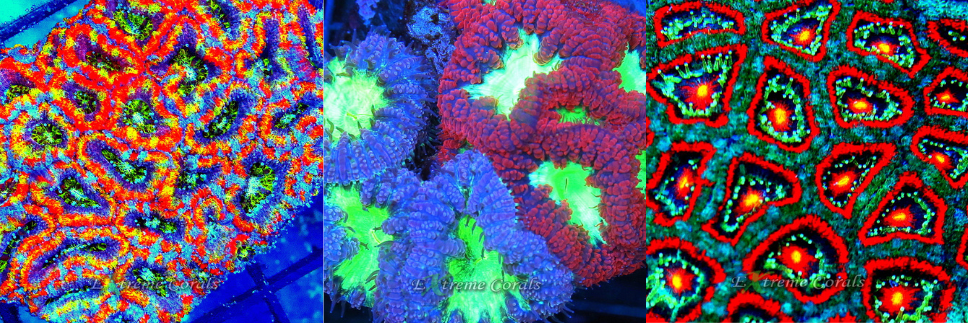Extreme Corals News and Updates
Acanthastrea Lordhowensis, Blastomussa, and Micromussa are they related and what are differences and similarities
Unveiling the Coral Cousins: Exploring the Connections, Contrasts, and Commonalities Among Acanthastrea Lordhowensis, Blastomussa, and Micromussa
Discover stunning LPS corals – Blastomussa, Acanthastrea Lordhowensis, and Micromussa. Explore differences, care tips, and vibrant colors for a thriving reef aquarium at home
by scott Shiles • January 24, 2024
In the reef keeping hobby, coral enthusiasts often seek the perfect combination of beauty and resilience for their aquariums. Among the diverse coral species available, LPS (Large Polyp Stony) corals stand out for their stunning appearance and relatively manageable care requirements. In this blog, we will delve into the similarities and differences between three popular LPS corals: Blastomussa, Acanthastrea Lordhowensis, and Micromussa. Additionally, we'll explore the individual care guidelines, covering aspects such as placement in the tank, water quality, lighting, temperature, water flow, feeding, and chemical requirements.
Similarities
Polyp Structure:
All three corals exhibit large polyps, contributing to their distinctive appearance.
Their polyps extend from a calcified skeleton, forming intricate structures that add visual appeal to the aquarium.
Stony Coral Nature:
As LPS corals, Blastomussa, Acanthastrea Lordhowensis, and Micromussa share a stony coral nature, making them hardy and suitable for reef tanks.
Color Variety:
These corals are known for their vibrant and diverse colorations, adding a spectrum of hues to the underwater landscape.
Differences
Skeletal Structure:
Blastomussa has a more compact and rounded skeletal structure, while Acanthastrea Lordhowensis often forms a maze-like appearance. Micromussa, on the other hand, has smaller polyps and tends to have a more scattered skeletal arrangement.
Polyp Arrangement:
Acanthastrea Lordhowensis typically exhibits a larger separation between polyps compared to the compact arrangement found in Blastomussa and Micromussa.
Size and Growth Rate:
Blastomussa generally grows at a slower rate and maintains a more modest size compared to the faster-growing Acanthastrea Lordhowensis and Micromussa.
Care Guidelines
Blastomussa

- Placement: Mid to lower regions of the tank.
- Water Quality: Maintain stable alkalinity, calcium, and magnesium levels.
- Lighting Intensity: Moderate to high light.
- Temperature: 75-80°F (24-27°C).
- Water Flow: Moderate flow.
- Feeding: Microplankton and smaller particle foods.
- Chemical Requirements: Regular water testing and adjustments as needed.
Acanthastrea Lordhowensis

- Placement: Bottom to middle regions.
- Water Quality: Stable parameters with regular testing.
- Lighting Intensity: Moderate to high light.
- Temperature: 75-80°F (24-27°C).
- Water Flow: Moderate to high flow.
- Feeding: Planktonic foods and occasional meaty items.
- Chemical Requirements: Maintain appropriate calcium and alkalinity levels.
Micromussa

- Placement: Bottom regions of the tank.
- Water Quality: Stable parameters with regular testing.
- Lighting Intensity: Moderate to high light.
- Temperature: 75-80°F (24-27°C).
- Water Flow: Low to moderate flow.
- Feeding: Microplankton and small particle foods.
- Chemical Requirements: Regular monitoring and adjustments.
Common Colors and Names
- Blastomussa: Common colors include green, red, and blue. Commonly referred to as "Blasto Wellsi" or "Blasto Merletti"
- Acanthastrea Lordhowensis: Colors range from various shades of red, green, yellow and blue, and orange. Often known as "Acan" or "Acan Lords."
- Micromussa: Displays colors like orange, red, blue, and green. Commonly called "Micromussa" or "Micro Lords."
By understanding the unique characteristics and care requirements of each coral, you can create a thriving and visually stunning underwater ecosystem in your own home.

